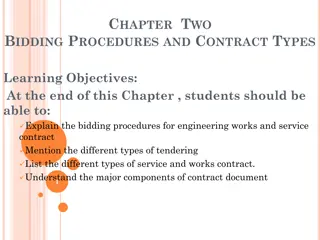
How to Inspect a Jet Ski at Auction Before Bidding
If you're looking to snag a great deal on a jet ski at an auction, proper inspection is the key to ensuring your purchase is worth the bid. This comprehensive guide offers step-by-step insights on how to thoroughly inspect a jet ski before placing a
Download Presentation

Please find below an Image/Link to download the presentation.
The content on the website is provided AS IS for your information and personal use only. It may not be sold, licensed, or shared on other websites without obtaining consent from the author. If you encounter any issues during the download, it is possible that the publisher has removed the file from their server.
You are allowed to download the files provided on this website for personal or commercial use, subject to the condition that they are used lawfully. All files are the property of their respective owners.
The content on the website is provided AS IS for your information and personal use only. It may not be sold, licensed, or shared on other websites without obtaining consent from the author.
E N D
Presentation Transcript
BOATS INSIGHTS www.salvageboatsauction.com How to Inspect a Jet Ski at Auction Before Bidding Buying a jet ski at an auction can be a great way to find a deal, but it requires careful inspection to ensure you're not buying a lemon. This guide will walk you through essential steps to inspect a jet ski at an auction before placing your bid. 1. Exterior Inspection: Hull and Body The first step in inspecting any jet ski is checking its exterior. Examine the hull for cracks, deep scratches, and signs of damage. Superficial scratches are common, but deeper cracks or warping can indicate structural damage. Pay close attention to the underside, as jet skis can o?en be dragged along surfaces, causing wear. Check for Corrosion: Corrosion on metal parts, especially around the engine or brackets, is a red flag. This can suggest exposure to saltwater without proper care or cleaning a?erward. Inspect the Paint and Gel Coat: Faded or blistered paint could point to sun damage, but also inspect for recent paint jobs, which may be hiding underlying damage.
Include an o?cial photo or visual material for the press 2. Engine and Components The engine is the heart of the jet ski, and inspecting it thoroughly is crucial. Check for Corrosion and Leaks: Open the seat or engine compartment and look for any signs of oil, coolant, or fuel leaks. Corrosion around engine parts is a clear indicator that the jet ski hasn't been well-maintained. Inspect the Engine Mounts: Ensure that the engine mounts are secure, with no excessive vibration or rust. Compression Test: If possible, perform a compression test to check engine health. Low compression can indicate internal damage. Condition of Belts and Hoses: Inspect belts and hoses for cracks, brittleness, or wear. 3. Electrical Systems The electrical system on a jet ski is vital for performance and safety. Check the Battery: Make sure the battery terminals are corrosion-free and that the battery holds a charge. Test the Gauges and Lights: Ensure that the gauges (such as speedometer and fuel gauge) and lights are functional. Malfunctioning gauges can indicate deeper electrical issues. Inspect the Wiring: Look for frayed or exposed wires, especially near the engine or electrical components.
4. Jet Pump and Impeller The jet pump and impeller are essential for propulsion. Damage here can seriously a?ect the performance of the jet ski. Inspect the Intake Grate: Check for debris or damage around the intake grate, which can indicate past neglect. Examine the Impeller: The impeller should be free from dents, chips, or bends. A damaged impeller reduces e?ciency and can lead to costly repairs. Check the Pump Housing: Ensure the pump housing isn't cracked or worn. 5. Test the Steering and Throttle The handling of a jet ski is crucial, so make sure both the steering and throttle systems are in good working order. Steering System: Check for smooth and responsive steering by turning the handlebars. Resistance or sti?ness can indicate damage to the steering cable or pump. Throttle: The throttle should be responsive and not sticky. A slow or sticky throttle could signal problems with the throttle cable or jet pump. 6. Check the Jet Ski s History Even though you're buying at an auction, it s essential to do your homework. If available, ask for a history report or maintenance records. This can give you insight into any past accidents or repairs. Keep an eye out for salvage titles, as they can indicate the jet ski was in a significant accident or previously declared a total loss. VIN Check: If possible, run the jet ski s VIN to ensure it hasn t been reported stolen or involved in any legal issues. 7. Test the Watercra?, If Possible Some auctions allow you to test the jet ski in the water before bidding. This is an excellent opportunity to see how it performs under load. Listen to the Engine: Pay attention to any unusual noises like knocking, grinding, or sputtering. Monitor Acceleration: The jet ski should accelerate smoothly. Hesitation or jerking can signal engine or impeller issues. Check for Overheating: A?er running the jet ski, check if the engine becomes excessively hot, which could indicate cooling system problems. 8. Set a Budget and Understand Repair Costs If the jet ski has minor issues, set a budget that includes potential repair costs. Know how much you're willing to spend on repairs and whether it's still worth the auction price.
Research Parts and Labor: Before bidding, get an idea of how much parts and labor for common jet ski repairs might cost, such as impeller replacement or electrical fixes. CONCLUSION Inspecting a jet ski at auction requires attention to detail. By thoroughly examining the exterior, engine, electrical systems, and propulsion components, you can avoid costly mistakes. Keep these steps in mind to ensure you re bidding on a jet ski that delivers both value and performance. Doing your homework and being prepared will help you make a confident and informed purchase at any jet ski auction.






















